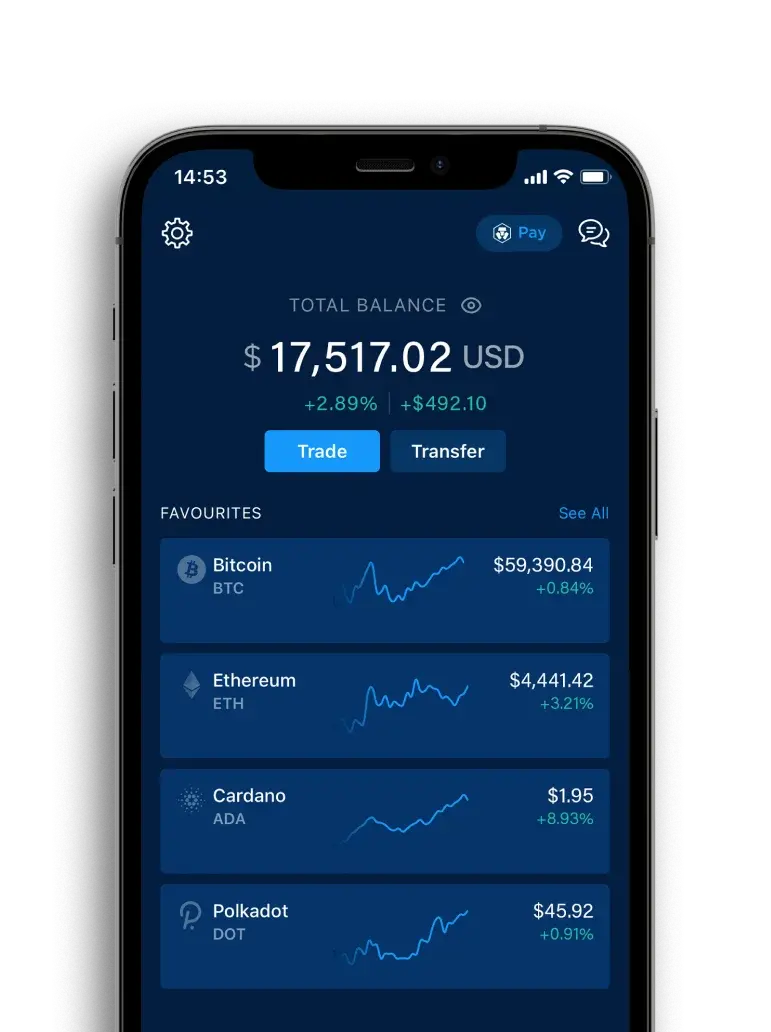Filter (0)
최신 유니버시티 스토리

/ 코인 및 토큰 - Jul 19, 2024
/ 코인 및 토큰
Jul 19, 2024
MakerDAO(DAI)란 무엇입니까?
DAO의 DAO와 스테이블코인인 DAI에 대해 알아보고 사용, 거래, 생성 방법도 알아보세요.

/ 비트코인
Feb 13, 2024
/ 비트코인
Feb 13, 2024
비트코인 지배력이란?
초보자를 위한 이번 가이드에서는 비트코인 지배력의 의미와 측정 방법, 거래에서 활용하는 방안을 살펴보며 가상자산에 관한 지식을 다듬어 봅니다.

/ 비트코인
Jan 25, 2024
/ 비트코인
Jan 25, 2024
비트코인 가격의 짧은 역사
BTC의 가격은 2009년 코인이 출시된 이후로 최고점과 최저점을 경험했습니다. Bitcoin의 가격 기록에 대한 이 가이드에서 기복에 대해 모두 알아보십시오.

/ 비트코인
Jan 15, 2024
/ 비트코인
Jan 15, 2024
비트코인을 위한 BRC-20 토큰 표준이란 무엇인가요?
비트코인 블록체인의 BRC-20 토큰 표준과 지금까지 비트코인 블록체인에서 발행된 토큰에 대해 알아봅니다.
유니버시티
주제:
레벨:

/ 코인 및 토큰 - Jul 19, 2024
/ 코인 및 토큰
Jul 19, 2024
MakerDAO(DAI)란 무엇입니까?
DAO의 DAO와 스테이블코인인 DAI에 대해 알아보고 사용, 거래, 생성 방법도 알아보세요.

/ 비트코인 - Feb 13, 2024
/ 비트코인
Feb 13, 2024
비트코인 지배력이란?
초보자를 위한 이번 가이드에서는 비트코인 지배력의 의미와 측정 방법, 거래에서 활용하는 방안을 살펴보며 가상자산에 관한 지식을 다듬어 봅니다.

/ 트레이딩 - Feb 05, 2024
/ 트레이딩
Feb 05, 2024
돈의 역사, 1부 — 물물 교환에서 통화로
사회가 어떻게 물물교환에서 통화로 진화했는지에 대한 짧은 역사 수업과 DeFi로의 인류 진화를 이해하기 위한 기본 지식.

/ 비트코인 - Jan 31, 2024
/ 비트코인
Jan 31, 2024
라이트코인(LTC)이란 무엇입니까?
비트코인이지만 더 빠르고 저렴하다고요? 비트코인의 확장성 문제를 해결하기 위한 비트코인 스핀오프인 라이트코인에 대해 알아보세요.

/ 비트코인 - Jan 25, 2024
/ 비트코인
Jan 25, 2024
비트코인 가격의 짧은 역사
BTC의 가격은 2009년 코인이 출시된 이후로 최고점과 최저점을 경험했습니다. Bitcoin의 가격 기록에 대한 이 가이드에서 기복에 대해 모두 알아보십시오.

/ 비트코인 - Jan 15, 2024
/ 비트코인
Jan 15, 2024
비트코인을 위한 BRC-20 토큰 표준이란 무엇인가요?
비트코인 블록체인의 BRC-20 토큰 표준과 지금까지 비트코인 블록체인에서 발행된 토큰에 대해 알아봅니다.

/ 비트코인 - Jan 15, 2024
/ 비트코인
Jan 15, 2024
Bitcoin Halving이란 무엇이며 BTC 가격에 어떤 영향을 미칩니 까?
약 4년마다 블록당 새 비트코인의 양이 절반으로 줄어듭니다. 이로 인해 BTC 가격이 상승할 수 있습니다. 다음은 그 효과를 예측하는 방법입니다.

/ 비트코인 - Jan 15, 2024
/ 비트코인
Jan 15, 2024
비트코인 결제: 라이트닝 네트워크란?
라이트닝 네트워크와 비트코인으로 결제하는 방법을 이 심층 초보자 가이드에서 설명합니다.
가상자산 여정을 시작할 준비가 되셨나요?
단계별 가이드에서 크립토닷컴 계정을 설정하는 방법을 확인하세요





